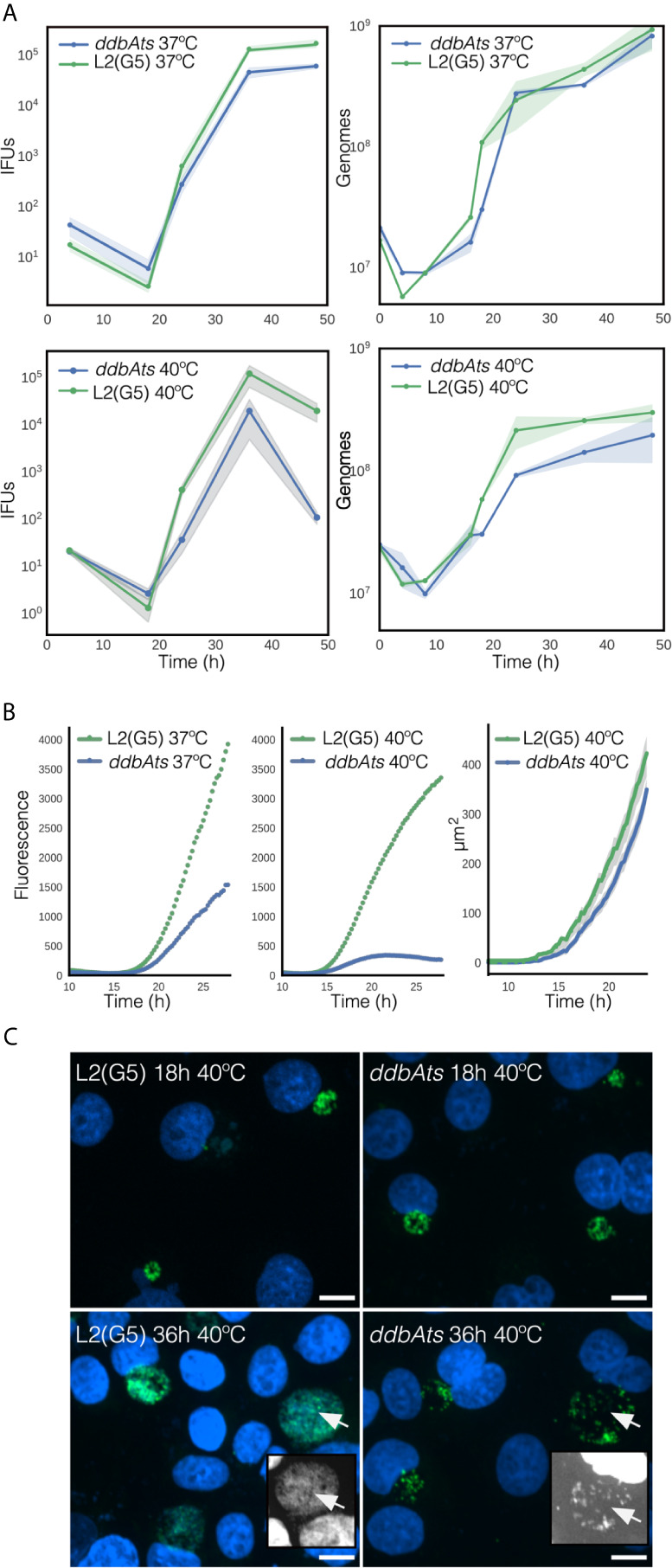Figure 5.

Growth and infectivity characteristics of the ddbAts mutant. (A) The ddbAts chlamydial mutant was grown at 37°C or 40°C and production of infectious progeny (IFUs) and genomic copy number, were compared to the isogenic strain L2(G5). There was little difference in growth and progeny production between L2(G5) and the ddbAts mutant at 37°C but at 40°C there was a dramatic difference in IFU counts late in the infection. (B) Live cell analysis of ddbAts late gene expression and comparison of inclusion size. ddbAts and L2(G5) were transformed with a plasmid expressing the fluorescent protein Clover driven by the hctA promoter and imaged every 15 minutes for 30 hours at either 37°C or 40°C. The size of the chlamydial inclusions was determined by measurement of inclusions from the microscopy images at the nonpermissive temperature of 40°C. The cloud represents 95% confidence intervals and n > 50 inclusions were measured per experiment. (C) The ddbAts defective phenotype is only observable during EB production. Confocal images of ddbAts growth showed that the inclusions are nearly identical to L2(G5) at 18 hpi but that at 36 hpi the ddbAts mutant inclusion contains less chlamydial organisms. L2(G5) and ddbAts mutants grown at 40°C for 18 and 36 hours were fixed and stained with DAPI to label the DNA (blue) and an anti-MOMP antibody to label Chlamydia (green). Insert pictures highlight the DAPI channel to better visualize the EBs. Size bar = 10µm.
